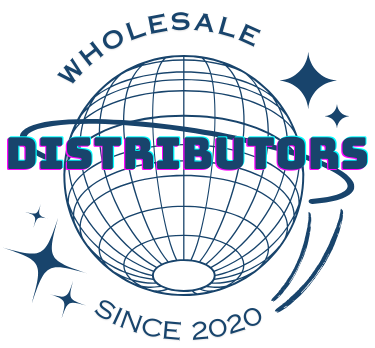
Amazon wholesale is one of the most profitable and scalable business models in e-commerce today. But if you’re just getting started, one wrong move can cost you more than just money—it can cost you time, account health, and long-term growth.
This guide breaks down the most common beginner mistakes and teaches you how to avoid them so you can profit like a pro.
🚫 Mistake #1: Choosing the Wrong Wholesale Supplier
Your success on Amazon starts with who you buy from. Many beginners fall for flashy offers and fake wholesale directories, ending up with unreliable suppliers.
What to do instead:
- Work only with a trusted wholesale supplier in USA
- Request invoices and verify if they’re Amazon-compliant
- Research top wholesale suppliers in USA with proven track records
A bad supplier can lead to inauthentic claims, suspensions, or poor product quality—don’t risk it.
💰 Mistake #2: Chasing “Too Good to Be True” Margins
We get it—everyone wants that 300% ROI. But super-high margins usually come with:
- Saturated products
- Quality issues
- Long-tail items with no real demand
Pro tip: A realistic 25-40% ROI from a reliable wholesaler in USA with fast-moving inventory is more sustainable—and less risky.
📦 Mistake #3: Buying Too Much Inventory Upfront
It’s exciting to place your first bulk order, but overbuying can tie up your cash and fill your garage with unsold goods.
What to do instead:
- Test with 10–30 units
- Track demand using tools like Keepa
- Scale only after verifying product performance
Work with distributors in USA who allow small minimum order quantities. Many grocery distributors in USA offer low-MOQ packs perfect for beginners.
⚠️ Mistake #4: Ignoring Amazon’s Rules
Amazon’s rules can be strict, especially when it comes to documentation and product compliance.
Avoid:
- Using retail receipts instead of invoices
- Listing restricted or hazardous items without approval
- Selling without brand or category ungating
Partner with a best wholesale supplier who understands Amazon’s ecosystem and provides the right paperwork.
🔍 Mistake #5: Skipping Product Research
Buying what you “think” will sell isn’t a strategy—it’s a gamble.
Smart sellers:
- Use Helium 10 or Jungle Scout to analyze real demand
- Avoid products Amazon itself sells
- Look for niches where you can compete (e.g., grocery, health, household)
Using data instead of guesswork will save you thousands in the long run.
🧾 Mistake #6: Not Keeping Good Records
Invoices, supplier communications, and product documentation are crucial. Amazon might ask for them at any time.
Create a system where every purchase is tracked and filed properly. This makes it easier to:
- Respond to policy checks
- Get ungated in restricted categories
- Prove authenticity when needed
📉 Mistake #7: Pricing Emotionally Instead of Strategically
New sellers sometimes price low to get quick sales—or high to chase massive profits. Neither is smart.
Use repricing tools or manual tracking to find the sweet spot:
- Competitive pricing
- Profitable margins
- Inventory turnover without sitting for months
💡 Pro Tip: Build Long-Term Relationships
Your supplier isn’t just a vendor—they’re your partner. Build strong relationships with top wholesale suppliers in USA who can give you:
- Better pricing over time
- Priority restocks
- Product recommendations before they hit the mainstream
Especially in 2025, these connections will separate you from casual sellers.
✅ Final Thoughts: Learn from Mistakes—But Don’t Make Them All Yourself
Amazon wholesale is powerful—but only if done right. Avoid these beginner mistakes and build your foundation the smart way. Whether you’re sourcing from grocery distributors in USA or finding your first wholesaler in USA, be selective, strategic, and data-driven.
By partnering with a trusted wholesale supplier in USA and using proven practices, you’ll position yourself to scale confidently and profit like a pro in 2025.

Add a Comment